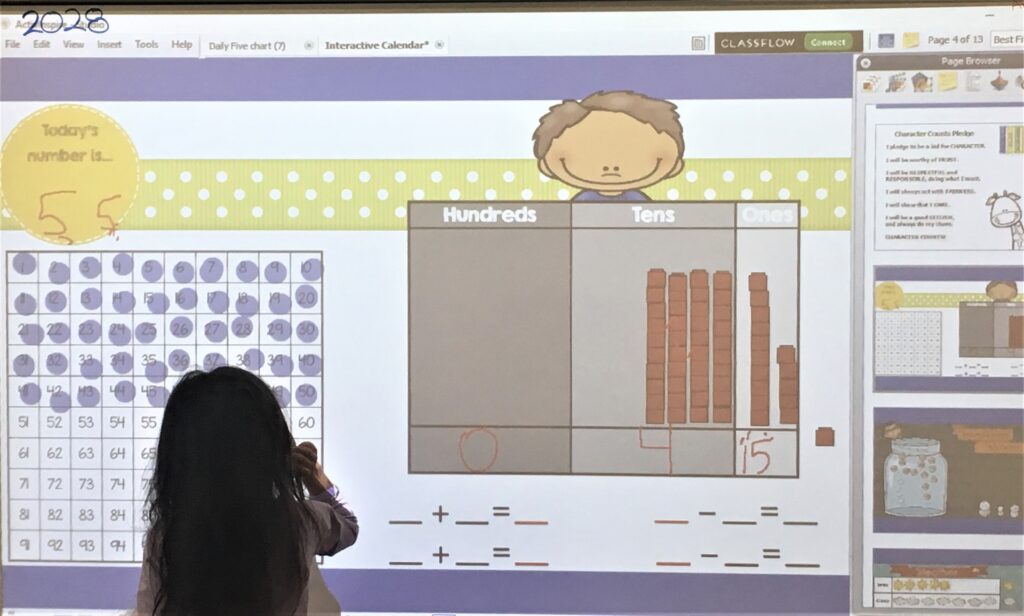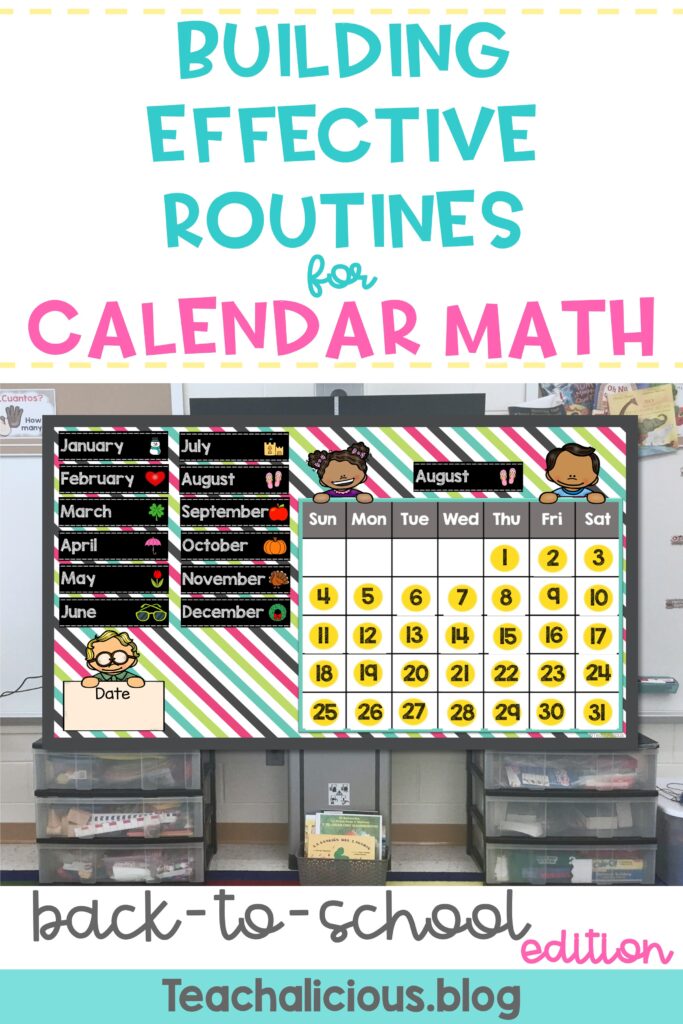Why is Calendar Math a big deal in my classroom?
My Calendar Math is a short designated time that helps students:
- Review prior skills learned
- Reinforce newer skills that have recently been taught
- Preview upcoming skills that will be learned
On average, I spend 2-3 hours teaching Language Arts but only 1 to 1.5 hours teaching math each day. I know many of my students need to spend more time developing their math skills. Fitting everything else in the schedule and extending math can be challenging, but not impossible.
For those reasons, I thoughtfully and purposefully use those 10 minutes, at the beginning of the day or right after recess (shock!) for Calendar Math in my classroom.
How do I start Calendar Math?
During the first 20 days of school, I lay the foundation of my Calendar Math routines. I use my interactive math calendar to take attendance and lunch count at the beginning of the day. Students manipulate the numbers (or their names) to choose their lunch choices as they arrive to class. I use this data to introduce the idea of a pictograph. We discuss how many students choose lunch choice 1, choice 2, or brought lunch from home. I write the numbers under each column and model how to find the total number of students present in class that day.
Next, I move on to the 120 chart and model how to add one more unit (ones) to the place value chart. I ask my students to help me count up to the number of the day (how many days we’ve been in school). I use the highlighter feature to count on to the number of the day and then count back to 0. Eventually I release this responsibility to my students.
On the 10th day of school, I model how to group 10 ones, and exchange them for 1 ten. This exposes my students to NOBT standards that they will learn later in the year.

I then move on to counting money. Similar to the place value chart, every day I add one more penny to the jar and exchange 10 pennies for 1 dime on the 10th day of school. This is one of the routines that I keep most of the year, by the time we get to Module 4 in our curriculum, students are very familiar with the values of pennies and dimes and I can introduce Place Value games using coins to help them make real-world-connections.
What skills do I teach next?
Once my students are familiar with counting using the 120 chart and coins, I introduce Number Detectives. For this activity, I use sheet protectors to place the printed slide of Number Detectives. Each student uses a dry erase marker to solve the mystery of the missing number. This is a great calming down activity for students after recess while taking bathroom and water breaks. This strengthens the skills they learn during Module 1 of our math curriculum, adding and subtracting within 10.
Once we move on to Module 2, I introduce the 10 & 1 more/10 & 1 less slide. I tell my kids that I am thinking of a number and they have to come up with questions such as:
Is it 10 more than 9?
Or 10 less than 13?
Could it be 1 more than 14?
Is it 1 less than 18?
I use the blank chart to model how to find the number using their questions. I use a black rectangle to cover any spaces past 20 as the focus of Module 2 is introducing place value within 20. As the year continues, the black box gets smaller as the curriculum expands understanding place value within 40 and later on within 120.
How do you find time to spiral review all these skills?
I don’t. As the year progresses, my Calendar Math evolves. I designate 1 or 2 skills to review each day, for example Monday’s for Money skills or I’m thinking of a number Thursday.
I also add to my Calendar Math new skills such as patterns and telling time as a way to review or preview but these are not skills that I maintain the whole year.
Final Thoughts
Although I do have a monthly calendar as part of my interactive Calendar Math flipchart, I often skip this part with my 1st graders unless I notice that my students have a language gap that needs to address more basic concepts such as days of the week, months, and date.

Remember: Calendar Math needs to be fluid.
- Start with 1 or 2 routines and reinforce them daily until students become familiar with the routines (e.g. counting)
- Add a layer of complexity using those routines that students are familiar with to add a more complex skill (using place value to count).
- Create a weekly schedule for skills as you add new routines (Mad Money Monday)
- Take away routines your students no longer need (Bye Bye days of the week in my 1st grade classroom)

[…] You can read more about my math calendar routine here. […]